Mostly just post my art, don't expect consistent posts.
Don't wanna be here? Send us removal request.
Text
Exploring the Demo Characters of Touhou Kinjoukyou ~ Fossilized Wonders
With the arrival of a new mainline Touhou demo, I finally want to take a swing at writing up my own examination and explanation of the cast of Fossilized Wonders so far, alongside my own thoughts on the characters and some speculation as to where the incident is going to go. As an enthusiast of both mythology and paleontology the title definitely intrigued me, to the point I made my own prediction for a possible character, but Fossilized Wonders still managed to surprise. Obviously, spoilers ahead.
Also, thanks to @Yamayuandadu for her help with this post. Ubame Chirizuka

Ubame is fairly straightforward, she’s described as a yamanba, a mountain-dwelling hag that is already represented in the series with Nemuno Sakata. However, her surname, Chirizuka (塵塚), also suggests inspiration from the Chirizuka-Kaiō (塵塚怪王; “Strange King of the Dust Heap”), a yōkai depicted by the famous Edo period artist Toriyama Sekien in the Hyakki Tsurezure Bukuro (百器徒然袋). Although images of a creature similar to the Chirizuka-Kaiō are found in Muromachi period night parade scrolls (百鬼夜行絵巻, Hyakki Yagyō Emaki), the name and description of the yōkai provided in the Hyakki Tsurezure Bukuro were seemingly created by Sekien.

Toriyama Sekien’s depiction of the Chirizuka-Kaiō from the Hyakki Tsurezure Bukuro.
According to Sekien, the Chirizuka-Kaiō is chief of the yamanba, an apparent allusion to the noh play Yamanba, though the Chirizuka-Kaiō has also been associated with Tsukumogami due to its illustration in the Hyakki Tsurezure Bukuro, which depicts it releasing a horde of Tsukumogami, alongside the fact that the work is otherwise filled with illustrations of Tsukumogami. Ubame herself is noted to be the king of the yamanba, much like the Chirizuka-Kaiō, and even has a crown to boot. Moreover, her spell cards also make reference to the karabitsu (唐櫃), a kind of six-legged Chinese chest, which the Chirizuka-Kaiō is notably depicted prying open.
As an aside, her given name Ubame is likely taken from the Ubame oak (姥目樫, ubamegashi), in much the same way that the name Nemuno is likely taken from the Persian silk tree (合歓木, nemunoki), which is a fun way to link the two yamanba characters together. Chimi Houjuu

Chimi is certainly one of the stranger characters visually, however her basis is evident from her name, as chimi can also refer to malevolent mountain-dwelling spirits (魑魅, also known as chimei in China). The chimei (alongside the mōryō/wangliang) is typically characterized as a troublesome spirit/monster that dwells in the wilderness, namely mountains and rivers. Just as Chimi’s bio says, the chimei and wangliang are indeed very ancient too. Notably appearing in Chinese texts such as the Zhuozuan (左傳), written in the 4th century BCE, as demons that attack people in rivers, lakes mountains and forests. Additionally, the mei (魅) recorded in the Shanhai-jing (山海經), which likely dates to the Han dynasty, has been identified by most commentaries on the text as identical with the chimei. Here the chimei is again associated with the wangliang, as a dangerous creature that lurks in mountains and waters, and is said to attack unwary travelers.
The wangliang specifically was also believed to dwell in tombs, where it was thought to devour corpses. Because of this, the wangliang was the subject of particular exorcism rites, with the Zhouli (周禮), written in the 2nd century BCE, noting how the wangliang was driven away by Fangxiangshi exorcists. Here it is said that, during royal funerals, a Fangxiangshi would strike the four corners of the funeral chamber with a lance, to drive away corpse-eating fangliang (方良, another name for the wangliang). Chimi’s bio additionally states that she is a creature known for its long ears, alongside her hair being suggestive of ears, which would appear to be a trait taken from the mōryō/wangliang. The Huainanzi (淮南子) for instance, states that the wangliang has “long ears and beautiful hair”, and the Wakan Sansaizui (和漢三才図会) also depicts a mōryō with long rabbit-like ears.

A depiction of a mōryō/wangliang from the Wakan Sansaizui.
Collectively Chimimōryō/Chimeiwangliang (魑魅魍魎) is occasionally used to refer to hordes of monsters, or otherwise nondescript collectives of spirits/demons. In one version of Gozu Tennō’s origin for instance, he is said to have become a leader of demons, Chimimōryō (魑魅魍魎), where he is otherwise stated to preside over the many gods of pestilence. Chimi herself appears to simultaneously represent both a chimei and wangliang, given she takes the long ears of the latter, and presumably the wangliang’s association with tombs, given her presence in an incident which revolves around a pyramid. Though I can’t help but wonder if we’ll also get a wangliang character in the full release, to complete the duo. One aspect does strike me as particularly unusual about Chimi however, that being her surname Houjuu (封獣), which she shares with Nue Houjuu (封獣 ぬえ). I'm unfamiliar with any connection between the nue and the chimei, though I suspect it may be something which will be expanded on by ZUN himself. Nareko Michigami

Despite the stereotypical Egyptian theming to her design, Nareko is actually noted as being a dōsojin (道祖神; “roadside deity”), which are Japanese folk deities enshrined by the side of the road and serve to avert disease and misfortune. The name Michigami (道神; “god of the road”) pretty directly draws from the kanji in dōsojin, though using the kun’yomi reading of the characters. Nareko’s stated ability to “block roads” is also a fairly direct representation of the dōsojin’s power, as they are believed to block off roads from evil influences, earning them the alternative name sae-no-kami (障の神; “god of obstruction”, not to be confused with shōgejin (障礙神) which refers to obstructive Buddhist deities like Matarajin). A typical example of a dōsojin is the ever-present Jizō statue, which is represented in Touhou by the character Narumi Yatadera. However another common form of dōsojin are statues featuring a man and woman, typically embracing or holding hands. Occasionally the pair in question are specific deities such as Sarutahiko and Ame-no-Uzume, which were often regarded as a married couple in popular perception. The crest adorning Nareko’s tiara also appears to depict an embracing pair of figures, demonstrating her connection to the Japanese dōsojin, despite her otherwise Egyptian design.
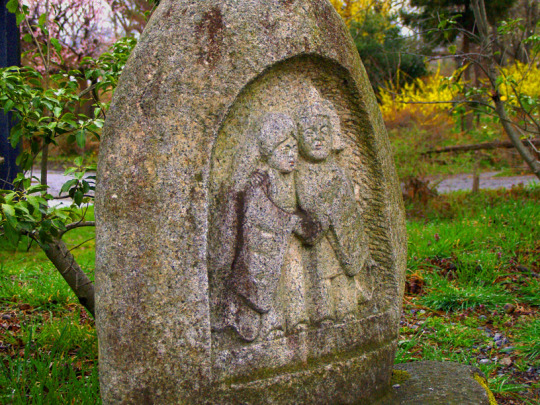
A dōsojin statue from Azumino in Nagano, depicting a male and female couple.
The iconography of these statues could also be particularly explicit, with the depicted figures sometimes being shown kissing or even copulating. Furthermore, the dōsojin itself could often take the form of a phallic stone. The exact reason for this sexual symbolism is unclear, though it evidently appears to have been a powerful apotropaic image. In any case, the cult worship of such stones can be traced back to the paleolithic/neolithic, and it was only much later that the iconography of the dōsojin became anthropomorphized. It is also worth pointing out that, although Nareko’s design suggests an Egyptian theme, the riddle-telling sphinx she references in her dialogue is specifically Greek in origin, not Egyptian. In the myth of Oedipus, the sphinx is portrayed as a feline being with the head and breasts of a woman and feathered wings. While not divine herself, the sphinx was placed near Thebes by Hera for reasons unknown, and menaced anyone passing by with a riddle she learned from the Muses (interestingly, while Greek authors present the content of the riddle itself consistently, there was no agreement over whether it was supposed to be poetry or prose).
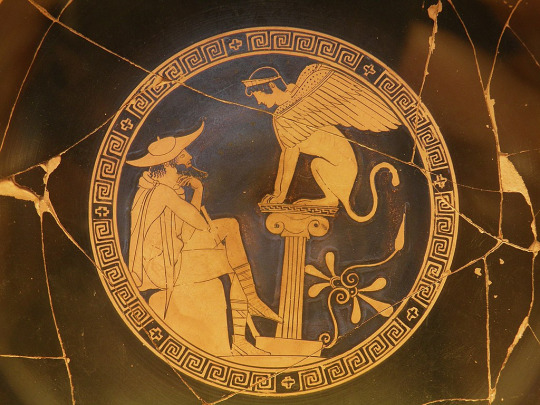
A depiction of Oedipus pondering the the sphinx's riddle, 5th century BCE. The popular image of sphinx today is based on a type of statue commonly manufactured in ancient Egypt, which is more correctly referred to as an “androsphinx” - literally “male sphinx”. This term was coined in antiquity by the Greeks, though. The term Egyptians used to refer to this type of statue has yet to be identified, if it existed in the first place. In Egyptian art, this sphinx was typically the representation of the pharaoh or his wife. For example, the Great Sphinx of Giza is a representation of Chefren. Additionally, in the Hellenistic period the god Tithoes came to be depicted as a sphinx. A similar being with a ram’s head instead of a human’s was one of the representations of the god Amun. While it is sometimes referred to as a “criosphinx” today, Egyptologists sometimes question the validity of calling it a sphinx at all.
Speculation on the Full Release
It seems that many have taken Nareko’s design as a sign that the incident will feature more explicit Egyptian mythology, and while I’m not opposed to the idea in principle, I can’t help but be skeptical. ZUN tends to leave the direction of an incident very unclear with the demo, and I feel that Nareko would be a little too on-the-nose there. Instead I would argue that Nareko’s design is a bit of a red-herring, and is only themed that way to match her role in guarding a pyramid, after all, there is no reason that the pyramid needs to be Egyptian. Rather, I suspect that the pyramid, and indeed the incident more broadly, will be tied to Mount Minakami (皆神山; “Mountain of Every God”) of the Nagano prefecture, which serves as the location of Gensokyo. Due to the mountain’s unique shape, it has been presented in fringe theories as a prehistoric man-made mound, said to be “the world’s largest pyramid”. There is even a local “Pyramid Festival” (ピラミッド祭り) held on the 5th of May (the same date the Demo was released on) celebrating this idea. To be clear this is almost certainly complete pseudoarcheology, of a similar vein to the Bosnian pyramid claims, however it is still fair game for Touhou.

Mount Minakami.
Outside of pseudoarcheology, Mount Minakami also has its fair share of shrines to draw from. The Iwato Shrine (岩戸神社) in particular, built around a small cave entrance about halfway up the mountain, is believed to be the remains of the stone entrance (天岩戸, Ama-no-Iwato) that was hurled from Takamagahara by Tajikarao once Amaterasu was lured out of hiding. This same cave is also held to be the entrance of the supposed pyramid, allowing for an easy association to be made between the two. To be fair, I also doubt that ZUN would feature a deity as high profile as Amaterasu, even in such a milestone game, but there’s clearly a throughline to link classical Japanese mythology with a fun fringe theory. While also a bit of a reach, the notion of a prehistoric pyramid would also explain why ZUN decided to feature a figure of the “Heart-Shaped Dogū” (ハート形土偶) with his picture of the demo, perhaps hinting that the incident will feature Jōmon artifacts and aesthetics, alongside advanced technology, akin to what WBaWC did with Kofun burial mounds.
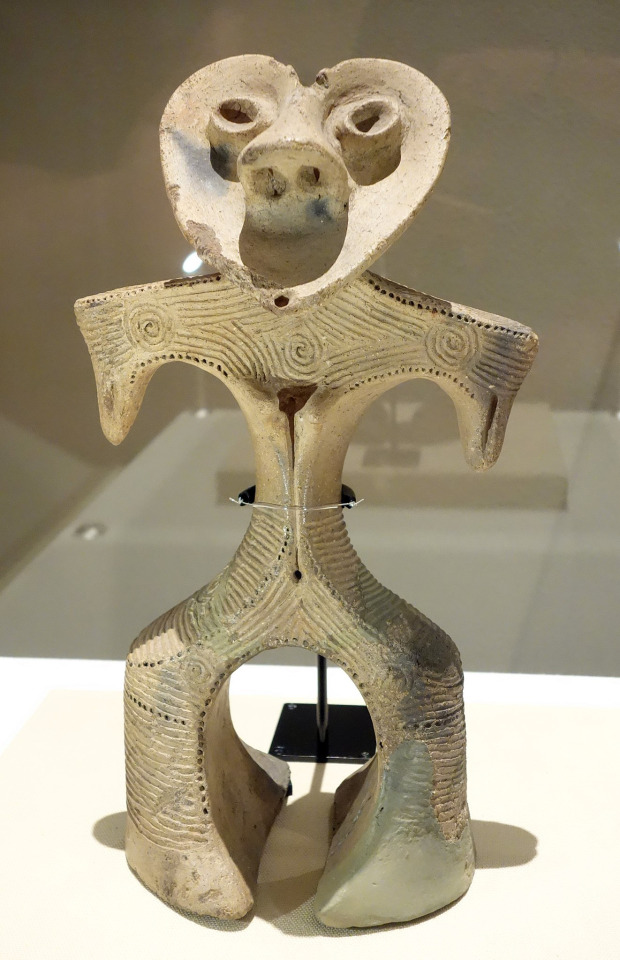
“Heart-Shaped Dogū” (ハート形土偶).
Other than this, my first impression with the name alone was that we were going to get a character based around prehistoric life, hence my own prediction. And while I wouldn’t rule out the possibility completely, it certainly doesn’t seem like the incident is going that way directly. There is also a rather unexpected reference made to the figure of Prester John in the stage 3 theme, Prester John being a legendary Nestorian patriarch and king who ruled over a lost Christian nation in Central Asia, and was said to have lived in a palace built from gold and precious gems. Now an incident themed around Nestorian Christianity would certainly shake things up (Nestorianism being an eastern branch of Christianity that was even able to spread into China by 635), but given that this is just a stage theme, and nothing else in the game really hints towards Nestorianism, I'm highly skeptical that this has any deeper meaning to it, and it would be a strange way to reveal the direction of the incident.
Thoughts on the Characters
I’ll admit I’m fairly mixed on the characters of Fossilized Wonders. They’re pretty fun conceptually, but their designs aren’t really to my taste, and don’t have the same immediate appeal that the cast of WBaWC had for me. Ubame’s design feels a little incomplete, especially in comparison to Nemuno, and could’ve really done with including the karabitsu chest that the Sekien illustration has. Chimi’s design is deliberately abstract and nature-themed, but doesn’t feel like it works in ZUN’s style. Should be a fun design to draw though. And while I think Nareko is a really funny character, and her design is easily my favorite out of the three, she also feels very… disorganized? Trying to mesh the concept of a dōsojin with the rather surface level Egyptian aesthetic just causes both to come across as half-baked, and I would prefer her design to have darker skin if the latter was more emphasized.
Additionally, I really wish there was a bit more to chew on with regards to the characters inspirations. They all seem to be pretty generic representatives of their given species (excluding Nareko’s quirks), rather than being something more specific, as with characters like Eternity Larva, Eika and Kutaka. Hopefully the full release will be able to pick up the slack there, but it does still leave something to be desired. Generally I’m more fond of characters with a laser-focused inspiration, rather than those who try to represent an entire category of creature/deity, and some of the recent additions like Chimata especially suffer in that respect for me.
That being said, I’m still very optimistic about Fossilized Wonders, even assuming I’m correct about Mount Minakami, I’m still likely going to be surprised with what Zun ends up doing. And I can very easily see myself warming to the new characters over time.
#touhou#touhou project#touhou 20#fossilized wonders#ubame chirizuka#chimi houjuu#nareko michigami#mythology#japanese mythology#japanese folklore#japanese yokai
177 notes
·
View notes
Text
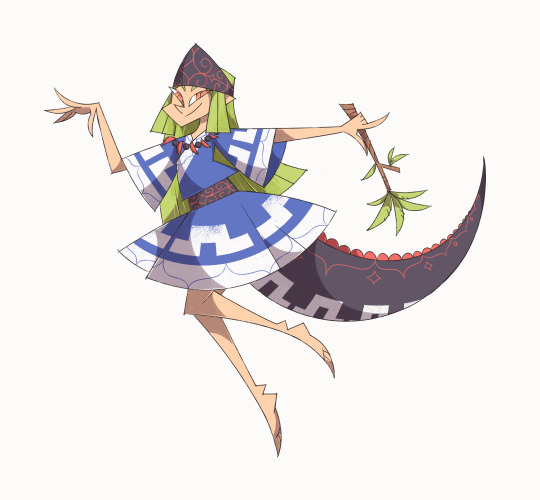
Last second character prediction for Fossilized Wonders (ignoring that a character was just revealed anyway lol): Living Fossil from the Age of the Gods - 神代の生きた化石 Kamui Mukawa (鵡川 冠依, Mukawa Kamui) Based on Kamuysaurus, a hadrosaurid dinosaur known from the Hakobuchi Formation of Hokkaido in Japan, named after the Kamuy of Ainu belief.
91 notes
·
View notes
Text
A complete, and extremely overdue, overhaul of the Wikipedia page for Yamata no Orochi. The state this page has been in has been inexcusable for way too long. Yamata no Orochi - Wikipedia
39 notes
·
View notes
Text

A redesign of Okina Matara, inspired by Japanese depictions of Mahakala. This isn't meant to shade anyone in particular, but there tends to be a lot of misunderstanding around the identification of Matarajin and Mahakala, and by extension how the perception of Mahakala differed in Japanese Buddhism, as opposed to say Hinduism, which I wanted to respond to with this redesign. The identification of Matarajin with Mahakala is made rather explicit in the Keiran Shūyōshū (渓嵐拾葉集; “Collection of Leaves Gathered from Stormy Streams”), compiled in the fourteenth century by the monk Kōshū (光宗), which provides a legendary account of Ennin's encounter with Matarajin at sea, alongside a secret clarification:

Important to note here though, is that Matarajin is also identified with a dakini, a kind of demonic entity that was believed to consume corpses. The reference to a dakini is far from random here, as Mahakala was characterized as a tamer of demonic forces, such as the dakinis, in East Asian Buddhism, owing to an account provided in the Darijing-shu (大日經疏; “Commentary on the Mahāvairocana Sūtra”) by Yixing:

This identity of Mahakala as a tamer of dakinis, alongside his role as a wrathful deity and protector of monasteries, underpinned their perception in Japanese Buddhism far more than their identity as a manifestation of Shiva in Hinduism. I can understand the enthusiasm of trying to link Matarajin to a big name like Shiva, but this just isn't the case, Matarajin was never linked to Shiva (or Daijizaiten for that matter), and the connection between Shiva and Mahakala was relatively unimportant in Japan. Additionally, the name Matarajin (摩多羅神) is useful to consider when understanding how Matarajin and Mahakala are connected, as it is most likely derived from Mata (摩多), which serves as a transliteration of the Sanskrit mātṛ́; “mother”, also pluralized as mātaraḥ, which in-turn refers to the matrikas. This may indicate that Matarajin was initially understood to be a deification of the matrikas as a single figure, or a title, i.e. “god of the matrikas”, referring to the deities that presided over them, such as Mahakala, Yama and Ganesha.

Much like the dakinis, the matrikas were understood in Japan as demonic entities, specifically gods of pestilence. In the context of the Matarijin-hō (摩怛利神法) ritual, which aimed to ward-off disease, the name Matarijin (摩怛哩神), which may be a variant of Matarajin, is explicitly used to refer to Mahakala in their role as a god that rules over the matrikas, also called the “seven mothers” (Shichimoten 七母天 or Shichimatari 七摩怛哩). Lending some credence to the idea that Matarajin may have initially served as a title for Mahakala, that later developed into a distinct deity.

Pictured above, a depiction of Mahakala labeled as Matarijin (摩多利神). Mahakala's iconography in Japan was rather distinct too, drawing largely from Huilin's description of the deity in the Renwang-jing (仁王經; "Humane King Sutra"):

It needs to stressed too that Matarajin wasn't simply a Japanese version of Mahakala either, it's certainly been suggested that he has is roots in Mahakala, but he evidently lost the wrathful imagery of Mahakala very early on and became a largely individualized figure. His identification with Mahakala is also informed specifically by the latter's ties to the matrikas and dakinis (which are themselves very closely related entities), and as such Matarajin can't just be treated as identical to say Daikokuten, as the latter become almost entirely detached from such demonic associations despite also being derived from Mahakala. This also brings up an important notion to consider when approaching Japanese Buddhist deities in general, that even though many have their roots in Hindu deities, they are still unique in their own respect. Daikokuten himself is emblematic of this, as his image as a squat and jovial god of fortune is about as far from the Indian Mahakala as you can get. In modern scholarship, Matarajin is also considered to belong to a class of deities called ijin (異神; "strange/alien gods") which often appear to possess foreign affinities, yet emerged exclusively within the context of Japanese Buddhism. Similar deities include the likes of Dakiniten, Sanbō Kōjin and Gozu Tennō. With that in mind, I wanted to draw specifically from the Japanese view of Mahakala, and especially depictions of Matarijin, to better reflect the reality of Matarajin's connection to Mahakala and their strange history as an ijin. Namely including the flayed elephant skin, skull garland and snakes coiled around the body.

This is a pretty cursory and rambling coverage of the subject, and I plan to eventually finish writing up a comprehensive post (or series of posts) covering Matarajin and Okina, but given its scope and my desire to focus on other projects for the time being, it will have to wait. As a whole though I would really like to push back against the idea that Matarajin's connections are somehow random, on the contrary, they tend to be pretty coherent once you understand the inherent complexity of Japanese Buddhism, and certainly aren't the result of some small cult haphazardly identifying Matarajin with any deity they felt like, as I've seen some Touhou fans claim. To this end, I think it's important to make clear the specific context in which Matarajin and Mahakala were connected, and if nothing else I think doing so at least makes for a pretty fun design.
59 notes
·
View notes
Text

Iguanodon, my favorite dinosaur.
1K notes
·
View notes
Text

Urumi Ushizaki, plus a Dunkleosteus
156 notes
·
View notes
Text

The terrible claw, Deinonychus.
2K notes
·
View notes
Text

Kanako Yasaka and Eika Ebisu. Based on the fact that the gods Takeminakata (who is the basis for Kanako) and Kotoshironushi (who is identified with Ebisu, the basis for Eika) are brothers.
206 notes
·
View notes
Text

Aya Shameimaru
181 notes
·
View notes
Text
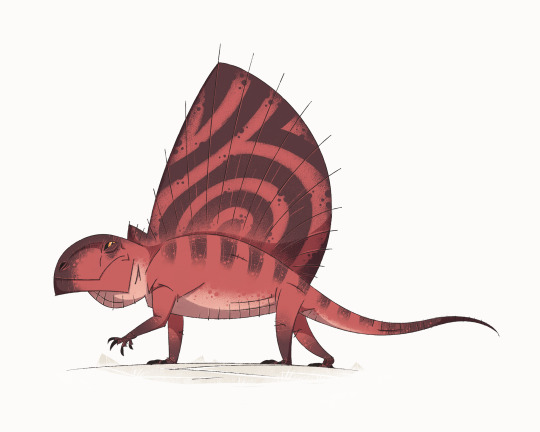
Dimetrodon
511 notes
·
View notes
Text

Yuuma Toutetsu
152 notes
·
View notes
Text
A new perspective on Hakurei Myōjin
Abstract: the poorly documented deity Hakurei Myōjin (博麗明神) has received little attention from scholars of Japanese religions. The accepted attestations are limited to a handful of setsuwa and a poorly preserved Muromachi period illustrated scroll conventionally referred to as Hakurei Engi Emaki (博麗縁起). These works are often presumed to be satirical, as they portray the deity as an exterminator of supernatural threats whose shrine is nonetheless visited mostly by oni and other similar beings. In absence of other evidence, the name was presumed to designate a purely literary creation, comparable to Henge Daimyōjin (変化大明神) from the more famous Tsukumogami Ki (付喪神記). However, recent inquiries into archives of a number of Buddhist temples indicate that a new approach to the study of Hakurei Myōjin is necessary. While much still remains unclear, it is now evident that not only Hakurei Myōjin was an object of active worship through the middle ages and possibly beyond, the theological ideas propagated by ritual specialists attached to his shrine, the location of which is still not entirely certain, were at various points in time supported or contested by more powerful religious institutions.
In this article, Ifocus on a recently discovered set of texts documenting a lawsuit against the Hakurei shrine. While precise dating is not yet possible, it can be argue that a terminus post quem can be established based on references to the theological concept of reverse honji suijaku, which flourished in the late middle ages. Additionally, the lawsuit offers a close parallel to the conflict between Ise and Mt. Asama revolving around the identification of the local protective deity, Uhō Dōji (雨宝童子), with figures associated with a variety of well established temples and shrines, especially Ise’s Amaterasu. While it is presently not possible to evaluate the validity of accusations apparently leveled at a particularly industrious anonymous Hakurei shrine maiden, it is possible that similar strategies as at Mt. Asama were indeed employed in a bid to make the shrine attractive to pilgrims and to increase the prestige of the deity. I also propose a number of possible explanations behind the identification of Hakurei Myōjin with the deities of Ise, Mt. Miwa and in particular Mt. Hiei.
I came up with this joke on the 6th of April last year, it spent an entire year in the drafts awaiting this day. My self restraint is truly astonishing.
59 notes
·
View notes
Text
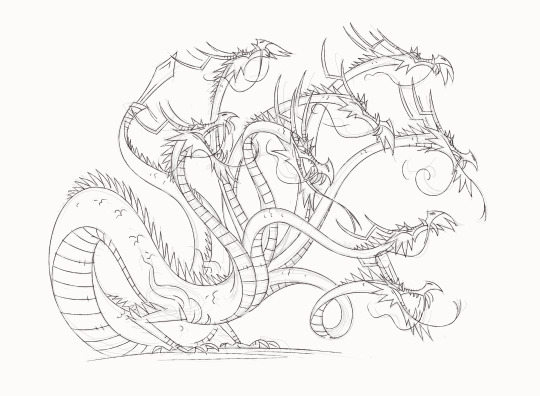
The Great Serpent of Izumo
77 notes
·
View notes
Text
Gave the Wikipedia page for Hata no Kawakatsu a major and much needed update, ultimately wound up being a bigger undertaking than I was expecting as they were more material than I thought, however the coverage of the figure definitely leaves something to be desired. Pretty sure you won't find the material from the Shōtoku Taishi Denryaku anywhere else lol. Additionally, their connection to Matarajin is pretty lacking all things considered... The supposed identification is dependent on Hattori Yukio's interpretation of the Meishukushū, which doesn't mention Matarajin at all on its own, and is in general a highly unorthodox text that likely had no impact on the wider beliefs surrounding either figure. I wouldn't completely write off a local association between the two at Kōryū-ji, but it's hardly the strongest link. Hata no Kawakatsu - Wikipedia
14 notes
·
View notes
Text

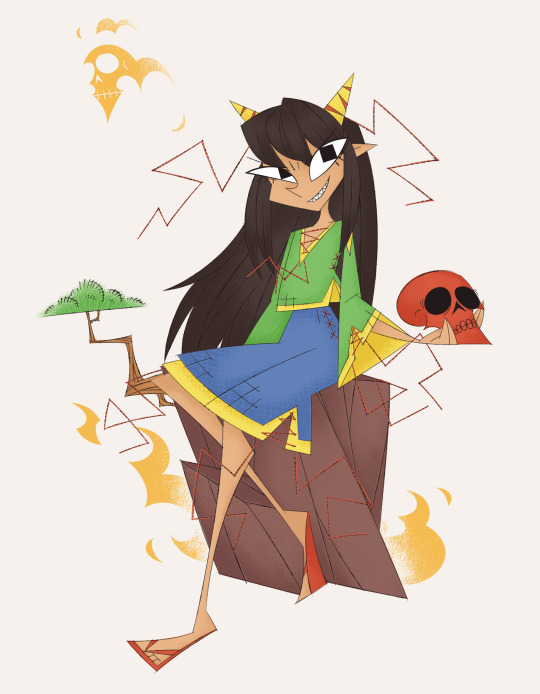
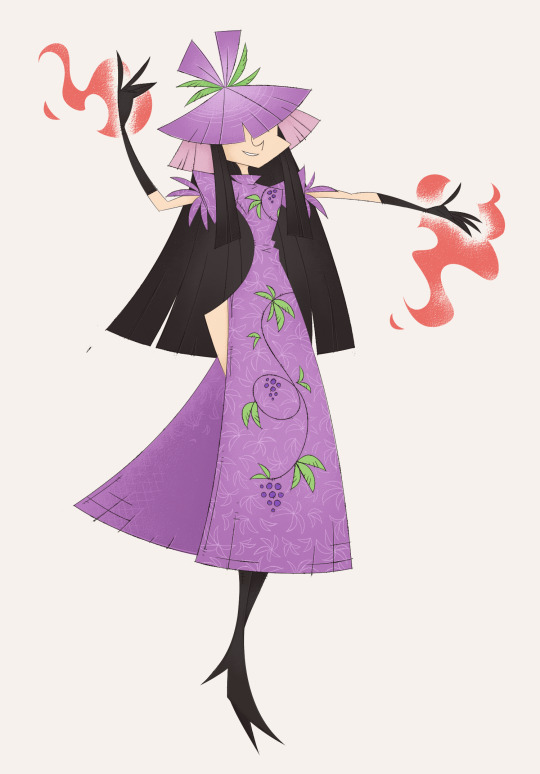
Zanmu Nippaku and Hisami Yomotsu, favorites of mine from Touhou 19.
348 notes
·
View notes
Text
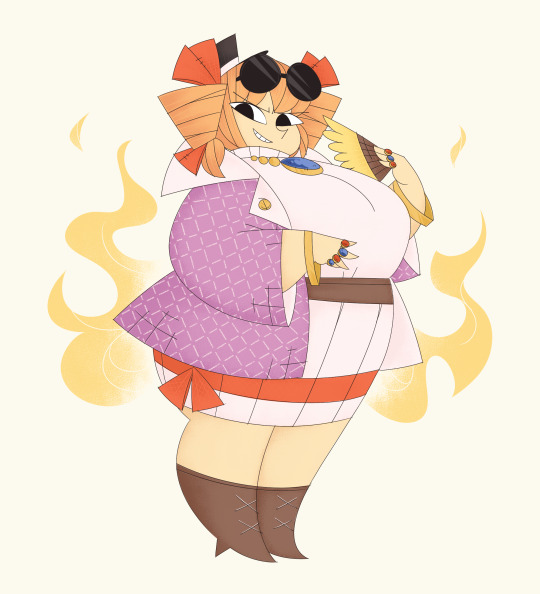
Another take on my favorite Touhou character Joon Yorigami.
288 notes
·
View notes
Text
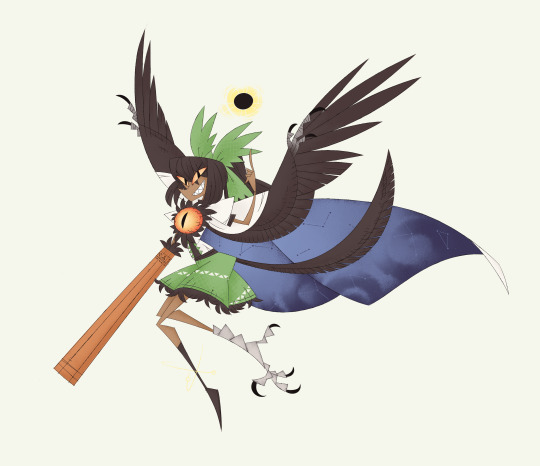
Utsuho Reiuji from Touhou, with elements inspired by Microraptor.
562 notes
·
View notes